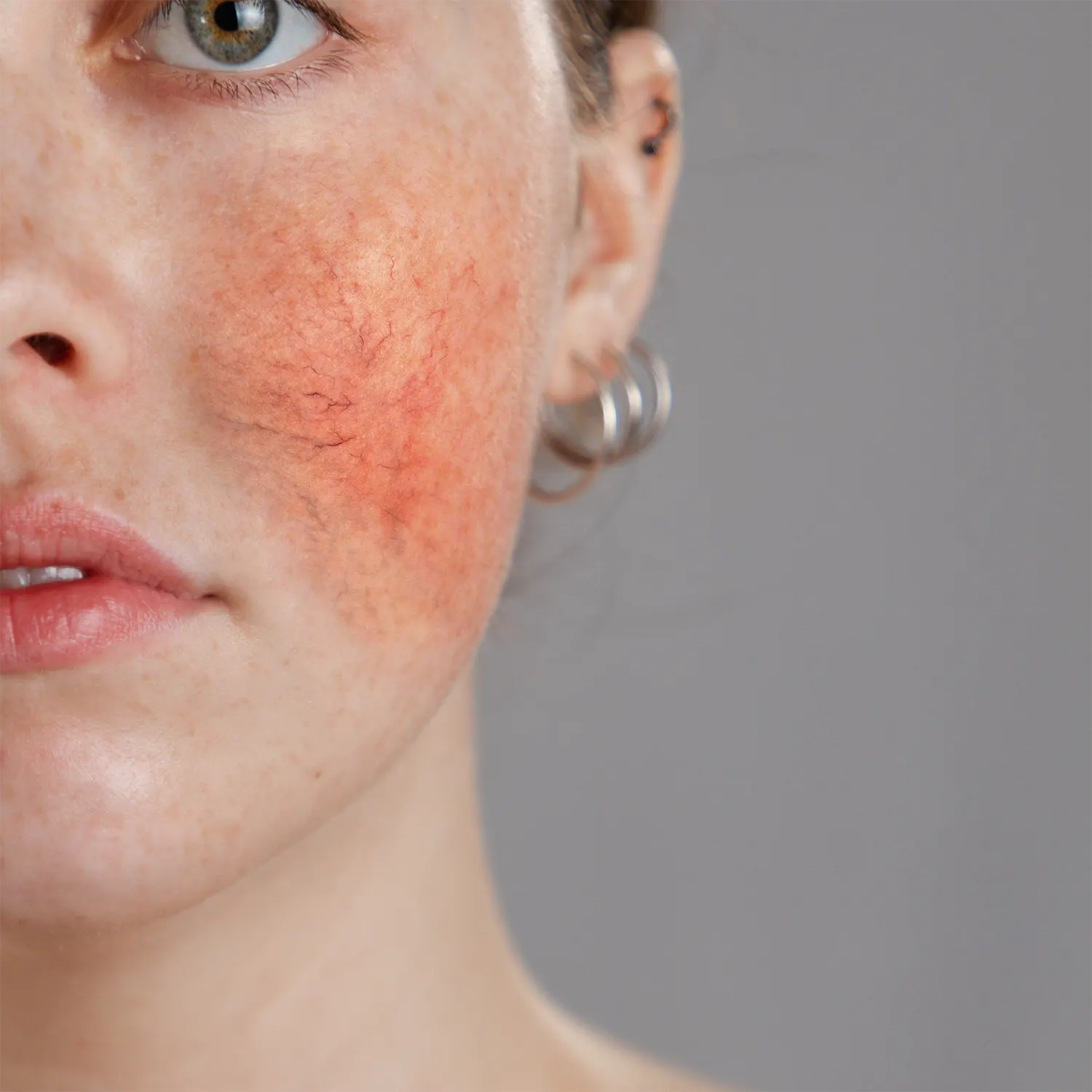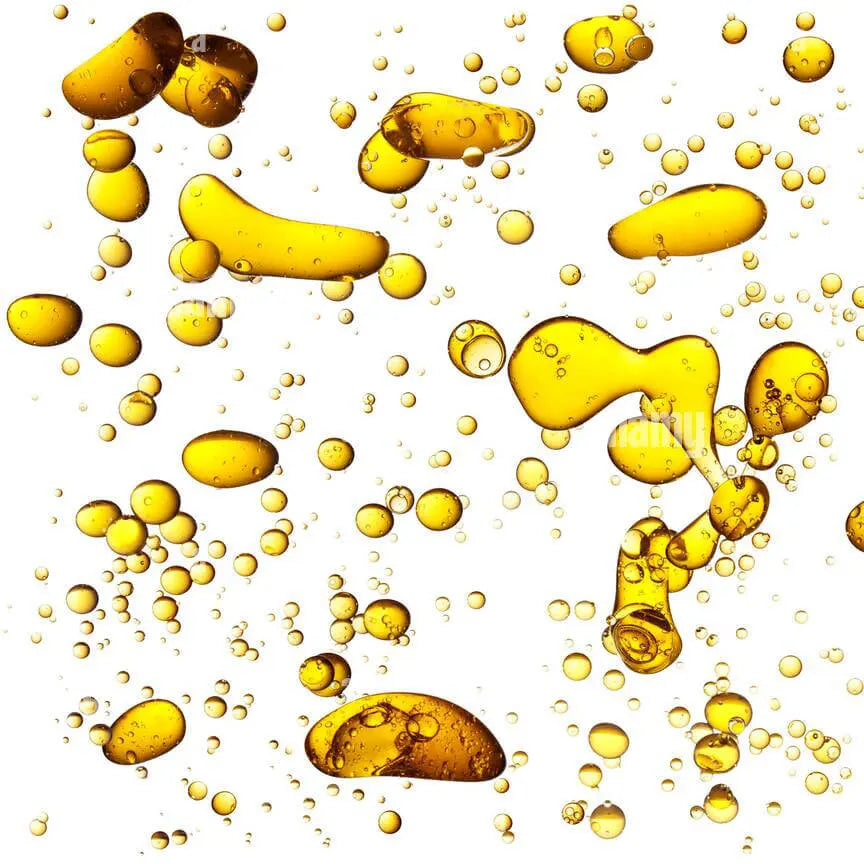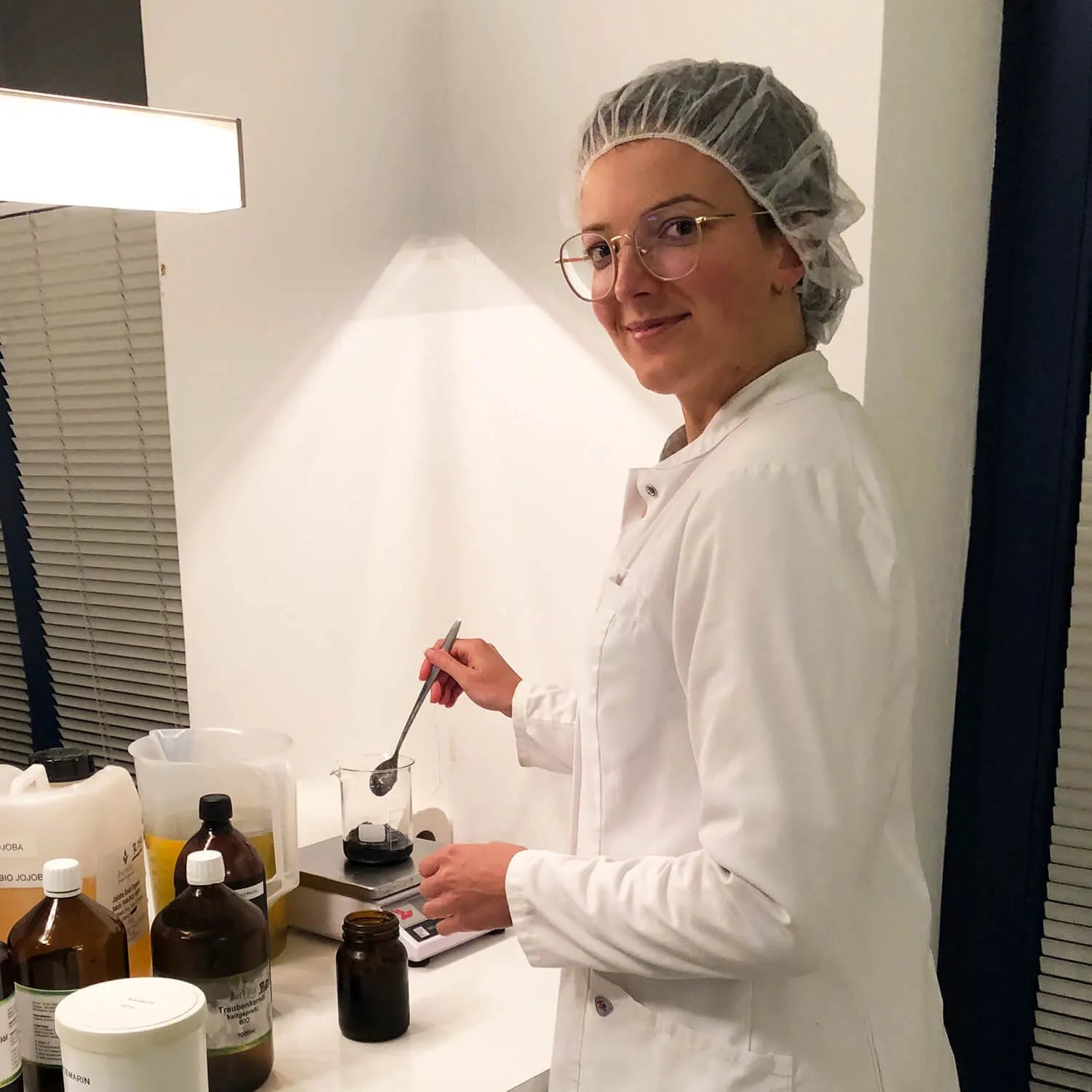
Rosacea and couperose – what helps?
What is rosacea?
Rosacea - also known as copper rose or facial rose - is a non-contagious, chronic skin disease. It occurs primarily in the cheeks, nose and forehead. The disease usually begins in bouts - most frequently between the ages of 30 and 50 - and is slightly more common in women than in men. Younger people are also increasingly affected by a precursor. Rosacea is accompanied by enlarged veins, persistent redness, inflammation, small nodules or pustules and even visible tissue changes.
Unlike acne, the skin does not appear oily or greasy and there are no hormonal changes. The blackheads typical of acne are also absent. However, there is also a mixed form of acne and rosacea, in which the symptoms of both skin diseases occur at the same time.
How can I tell if I have rosacea?
Not all redness is a precursor to rosacea. However, there are some symptoms you should look out for in your skin:
- persistent redness in the face, especially in the T-zone (forehead, nose, cheeks)
- small, red, swollen pimples, papules or thickening of the skin
- red, inflamed eyelids or eyes
- dry or flaky skin
- a burning or tingling sensation in the face
However, please note that these symptoms can also occur in connection with other skin diseases or allergic skin reactions. If in doubt, you should seek medical advice and have the exact diagnosis clarified by a dermatologist.
What causes rosacea?
The exact causes of rosacea have not yet been researched, but there seem to be risk factors that are common in rosacea:
- A genetic predisposition, including weak connective tissue or high blood pressure
- A weakened immune system, possibly associated with excessive colonization of the skin with Demodex mites. The skin reacts to this with an increased immune response, produces antibodies and thus triggers a chronic inflammatory reaction of the skin with burning, stinging and itching.
- An excessive reaction to certain triggers such as heat, cold, alcohol, increased UV radiation, spicy food or emotional stress
- A disrupted skin barrier that promotes inflammation, pimples and redness
In general, light or thin skin allows redness and veins to show through more clearly than a dark complexion and thicker skin.
What is the difference between couperose and rosacea?
Both couperose and rosacea are common, non-contagious skin conditions on the face. They are often confused with each other because they have similar symptoms and are both caused by hypersensitivity of the skin.
With couperose, the fine, copper-red veins with increased blood flow become visible and can appear as spots on the face. This leads to weakened connective tissue with so-called flushes. These are sudden, fleeting reddening of the skin in the area of the cheeks, nose, chin and middle of the forehead. Couperose mainly occurs in people with sensitive and fair skin. It is made worse by incorrect facial care, extreme heat, cold, UV radiation, coffee, nicotine or alcohol consumption. Couperose is often considered a precursor to rosacea. However, with proper care, couperose does not lead to rosacea.
In contrast to couperose, rosacea is a more serious chronic, inflammatory skin disease. The symptoms of rosacea are persistent redness or bluish discoloration, dilated blood vessels, pustules, papules and inflammatory nodules on the face. In addition to a rougher skin surface, tuberous skin growths can also appear in a later stage and cause a great deal of psychological stress to those affected. Rosacea is more common in middle-aged women and less common in men.
With proper care and an adapted lifestyle, the symptoms of rosacea can be alleviated and flare-ups reduced.
How do I tell the difference between rosacea and acne?
Rosacea and acne may look similar, but there are some key differences:
1. Skin redness and vessels
With rosacea, the redness on the face is permanent, often with visible dilated blood vessels (telangiectasias), especially on the cheeks, nose and forehead. With acne, on the other hand, the redness is not permanent, but individual inflamed pimples keep appearing.
2. Pimples and blackheads (comedones)
Rosacea usually consists of small red pustules or papules, but not blackheads. Acne causes blackheads (with black and white dots).
3. Skin type and triggers
Rosacea skin is a combination skin with a weakened skin barrier, often with dry, but also seborrheic or flaky areas. The T-zone can be prone to excessive sebum production. Rosacea skin is often sensitive to certain triggers such as cold, wind, hot drinks, alcohol, sunlight or stress. Acne mostly affects oily skin and is caused by hormones, sebum production and clogged pores. Acne can be made worse by a diet that promotes inflammation.
4. Affected areas
Rosacea typically occurs in the central face (cheeks, nose, forehead, chin). Acne, on the other hand, can occur all over the face as well as on the back, chest and shoulders.
5. Burning or stinging
Rosacea is often accompanied by a burning or stinging sensation on the skin. With acne, there is usually no burning sensation, but there is pressure pain in deep pimples.
Are there mixed forms between rosacea and acne?
In fact, rosacea and acne can occur simultaneously, or the symptoms of both conditions can appear mixed. Three scenarios are possible:
1. Acneiform rosacea (rosacea with acne-like symptoms)
This form of rosacea causes inflammatory pustules and papules that resemble acne. However, there are no blackheads (comedones) that are typical of acne. The skin reacts sensitively to external stimuli such as heat, alcohol or stress.
2. Rosacea and acne at the same time (coexistence of both diseases)
Some people have rosacea in the central part of the face (cheeks, nose, forehead) and additional acne in other areas (e.g. chin, back, chest). In such cases, blackheads (acne) and persistent redness with vascular changes (rosacea) occur together.
3. Steroid-induced rosacea (mixed form triggered by cortisone)
Long-term use of cortisone creams can also trigger a rosacea-like skin reaction. Those affected develop red, irritated skin with pimples, similar to a mixture of acne and rosacea.
What to do with mixed forms?
No aggressive acne treatment! Many acne products (e.g. benzoyl peroxide, high-dose retinol) can make rosacea worse. Instead, it is important to use the right skin care: use mild, non-irritating products without alcohol or fragrances.
Our care products for rosacea:
Magnolia Calming Serum
The Magnolia Calming Serum with 20% lipid content is based on organic aloe vera gel. The emulsifier-free formula is usually sufficient as a light moisturizer for rosacea skin instead of a day cream in summer. The active ingredient complex of green tea and licorice root extract calms redness and improves the condition of the skin after just a few applications. Cold-pressed grape seed oil strengthens the connective tissue, while beta-glucan from oats strengthens the skin barrier and antioxidant-effective magnolia bark inhibits inflammation.
grape seed face cream
In winter, rosacea skin also needs richer, more lipid-replenishing protection. To do this, you can either apply a thin layer of grape seed day cream with 30% lipid content over the Calming Serum - or use the grape seed face cream as a second care step after the hyaluronic serum. However, our experience shows that rosacea skin usually does not like products with a high fat content.
You can find out more skin care tips in our next blog post on couperose and rosacea. Click here to read about the skin needs of rosacea





